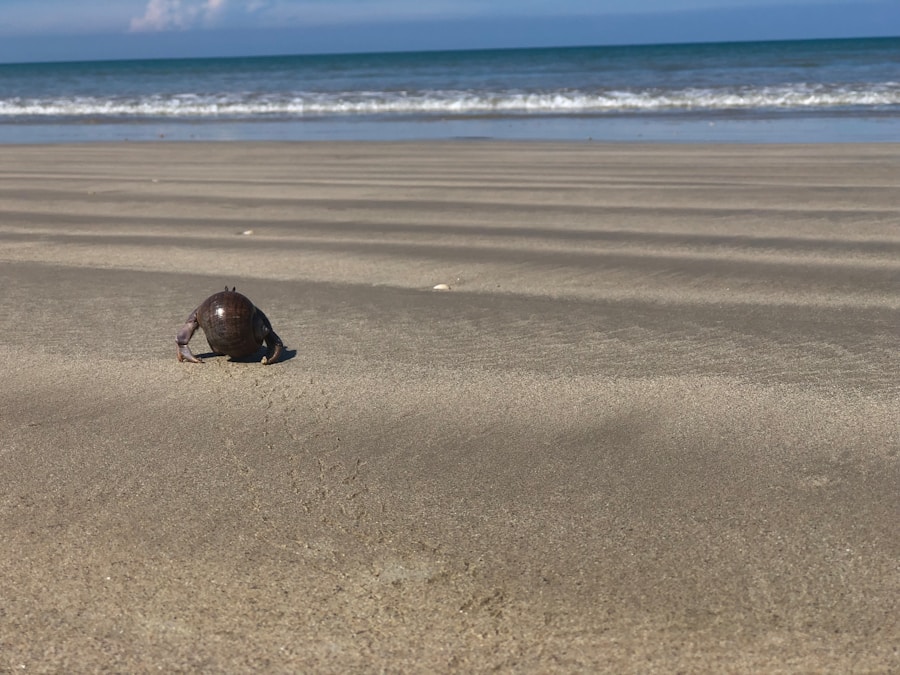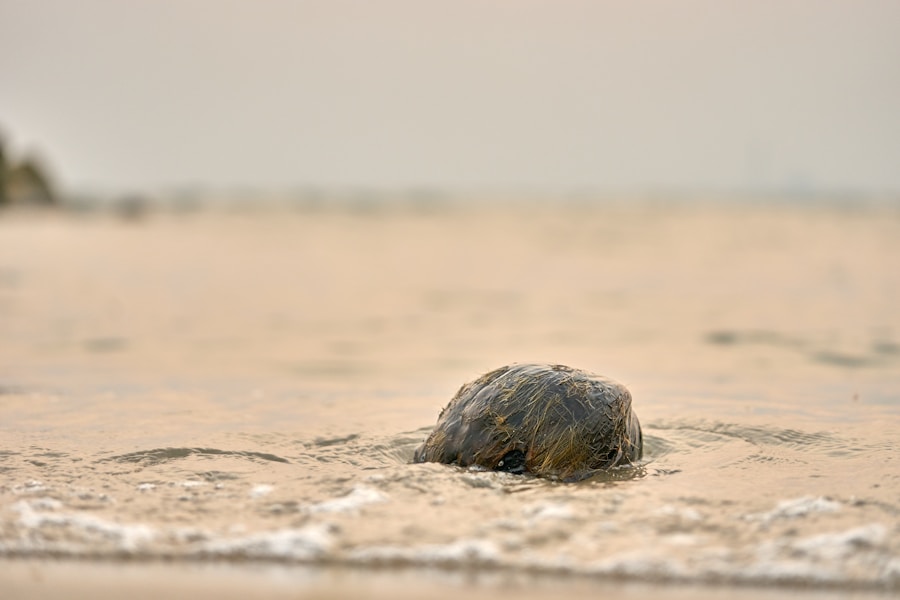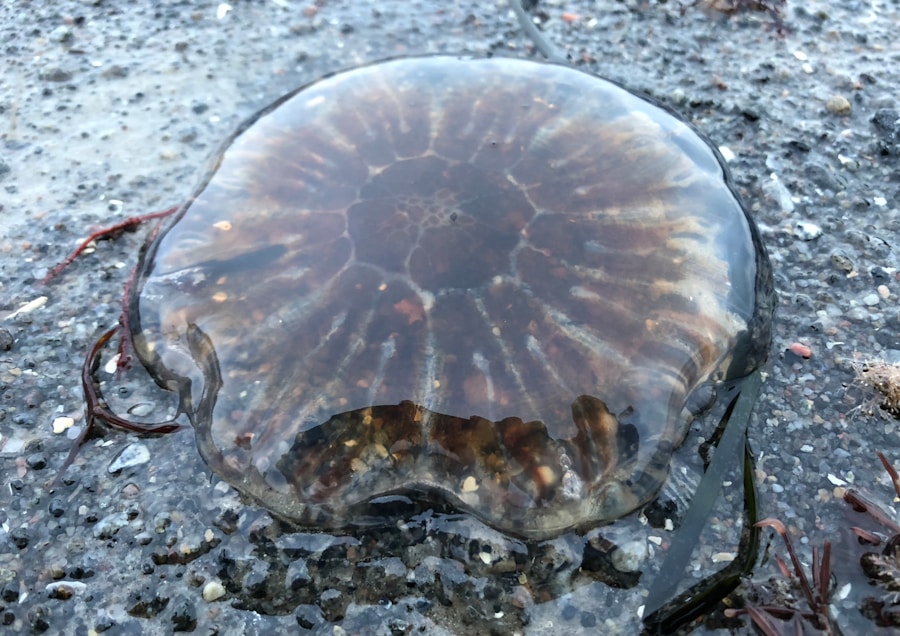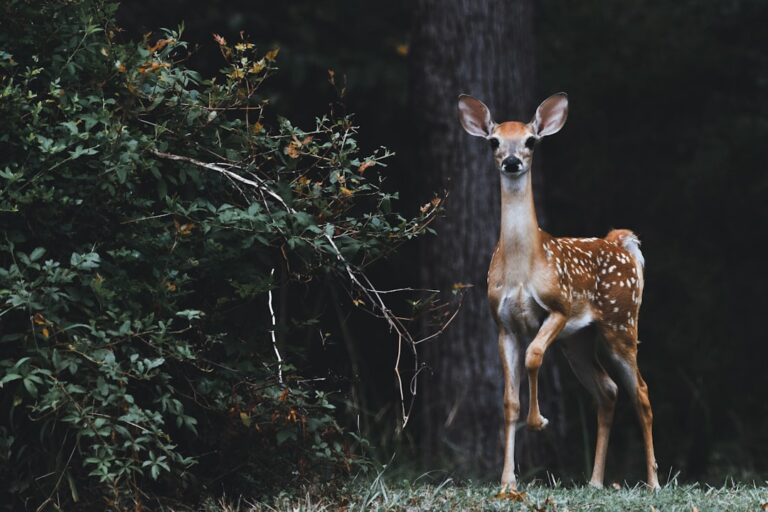Horseshoe crabs, belonging to the class Merostomata, are fascinating marine arthropods that have existed for over 450 million years, making them one of the oldest living species on Earth. These creatures are not true crabs; rather, they are more closely related to spiders and scorpions. Their unique evolutionary history has equipped them with a hard exoskeleton, a long tail spine, and a distinctive body shape that resembles a horseshoe, which is how they got their name.
Found primarily along the Atlantic coast of North America and in parts of Asia, horseshoe crabs inhabit shallow coastal waters and estuaries, where they play a crucial role in the marine ecosystem. The significance of horseshoe crabs extends beyond their ancient lineage; they are vital to both ecological balance and human health. Their blue blood contains a unique substance called Limulus Amebocyte Lysate (LAL), which is used in the medical field to test for bacterial contamination in vaccines and medical devices.
This remarkable property has made horseshoe crabs invaluable to the pharmaceutical industry. However, their ecological role is equally important, as they serve as a food source for various species, including migratory birds, fish, and even humans in some cultures. Understanding the biology and behavior of horseshoe crabs is essential for appreciating their contributions to both nature and human society.
Key Takeaways
- Horseshoe crabs are ancient marine arthropods that have remained relatively unchanged for millions of years.
- Horseshoe crabs have a hard exoskeleton, ten legs, and a long, pointed tail that they use for steering and digging.
- Mating rituals are crucial for horseshoe crabs to reproduce, and they typically occur during high tides in the spring and early summer.
- The courtship dance of horseshoe crabs involves the male attaching himself to the female and both of them moving together as the female lays her eggs.
- Moonlight plays a significant role in horseshoe crab mating rituals, as it helps to synchronize the timing of the mating activities.
The Anatomy and Behavior of Horseshoe Crabs
Horseshoe crabs possess a unique anatomy that sets them apart from other marine organisms. Their bodies are divided into three main parts: the prosoma (or cephalothorax), the abdomen, and the telson (the long tail spine). The prosoma is covered by a hard carapace that provides protection from predators and environmental hazards.
Beneath this armor lies a complex arrangement of appendages, including five pairs of legs used for locomotion and feeding. The first pair of legs is modified into pincers, which help them grasp food items such as mollusks and detritus on the ocean floor. Behaviorally, horseshoe crabs exhibit intriguing patterns that reflect their adaptation to their environment.
They are primarily nocturnal creatures, often emerging from their burrows at night to forage for food. Their movements are characterized by a slow, deliberate crawl along the seabed, where they use their specialized appendages to sift through sediment. During the breeding season, which typically occurs in late spring to early summer, horseshoe crabs become more active as they engage in mating rituals.
These behaviors are not only essential for reproduction but also highlight the intricate social dynamics within their populations.
The Importance of Mating Rituals for Horseshoe Crabs

Mating rituals among horseshoe crabs are critical for ensuring the continuation of their species. These rituals are complex and involve various behaviors that facilitate successful reproduction. During the breeding season, males seek out females by following chemical cues released into the water.
Once a male locates a female, he will grasp her with his specialized pincers, often clinging to her back as she moves toward shallow waters to lay her eggs. This behavior not only secures his position but also increases the likelihood of fertilization. The timing of these mating rituals is crucial, as it coincides with specific environmental conditions that enhance reproductive success.
Horseshoe crabs typically spawn during high tides under the cover of darkness, which provides protection from predators and increases the chances of egg survival. The females can lay thousands of eggs in a single spawning event, burying them in sandy substrates where they will develop over several weeks. This reproductive strategy ensures that even if some eggs are predated upon or fail to hatch, enough offspring will survive to maintain population levels.
The Courtship Dance of Horseshoe Crabs
| Aspect | Data/Metric |
|---|---|
| Species | Limulus polyphemus (Atlantic horseshoe crab) |
| Location | Atlantic coast of North America |
| Courtship Behavior | Males approach females and clasp onto their shells |
| Mating Period | During high tides in the spring and early summer |
| Egg-laying | Females lay thousands of eggs in nests in the sand |
| Importance | Crucial for the survival of the species and provides food for migratory birds |
The courtship dance of horseshoe crabs is a captivating spectacle that showcases their unique mating behaviors. This ritual often begins with males searching for females during the breeding season. Once a male finds a female, he will engage in a series of movements that can be described as a dance.
This involves circling around the female while using his pincers to grasp her shell gently. The male’s movements are not only an expression of courtship but also serve to demonstrate his fitness as a mate. As part of this courtship display, males may also engage in aggressive interactions with other males vying for the same female’s attention.
These confrontations can involve pushing or nudging each other with their bodies or pincers. Such behaviors help establish dominance hierarchies among males and ensure that only the strongest individuals have the opportunity to mate with females. The courtship dance is not merely a display of physical prowess; it also plays a vital role in ensuring genetic diversity within populations by allowing females to choose mates based on their performance during these rituals.
The Role of Moonlight in Horseshoe Crab Mating Rituals
Moonlight plays a significant role in the mating rituals of horseshoe crabs, influencing their behavior and reproductive success. These creatures are known to synchronize their spawning activities with lunar cycles, particularly during full moons when tidal ranges are at their highest. The increased water levels during these times create ideal conditions for females to access sandy beaches where they can lay their eggs safely.
The presence of moonlight also affects the behavior of both males and females during mating rituals. The illumination provided by the moon allows horseshoe crabs to navigate more effectively in shallow waters, enhancing their ability to locate potential mates. Additionally, the bright light may deter some predators from approaching during these critical spawning events, further increasing the chances of successful reproduction.
This intricate relationship between lunar cycles and mating behaviors highlights the adaptability of horseshoe crabs to their environment and underscores the importance of natural rhythms in their life cycle.
Challenges and Threats to Horseshoe Crab Mating Rituals

Despite their resilience over millions of years, horseshoe crabs face numerous challenges that threaten their mating rituals and overall populations. One significant threat is habitat loss due to coastal development and pollution. As human activities encroach upon natural habitats, spawning grounds are often destroyed or degraded, making it increasingly difficult for horseshoe crabs to find suitable locations for laying eggs.
This loss of habitat not only impacts reproductive success but also disrupts the delicate balance of marine ecosystems that rely on horseshoe crabs as a food source. Overfishing poses another serious challenge to horseshoe crab populations. Their blood is highly sought after for its medical applications, leading to increased harvesting pressures on wild populations.
Additionally, horseshoe crabs are often used as bait in commercial fisheries, further depleting their numbers. The combination of habitat destruction and overexploitation has resulted in declining populations in many areas, raising concerns about the long-term viability of horseshoe crab mating rituals and their ecological roles.
Conservation Efforts to Protect Horseshoe Crab Mating Rituals
In response to the threats facing horseshoe crabs, various conservation efforts have been initiated to protect their populations and habitats. One approach involves establishing protected areas along coastlines where horseshoe crabs can spawn without interference from human activities. These sanctuaries provide safe environments for breeding and help ensure that sufficient numbers of eggs survive to hatch into juvenile crabs.
Additionally, regulatory measures have been implemented to manage the harvesting of horseshoe crabs for biomedical purposes and bait use. By setting quotas and monitoring populations, conservationists aim to balance human needs with the preservation of this ancient species. Public awareness campaigns have also been launched to educate communities about the ecological importance of horseshoe crabs and promote sustainable practices that minimize harm to their habitats.
The Future of Horseshoe Crab Mating Rituals
The future of horseshoe crab mating rituals hinges on ongoing conservation efforts and increased awareness about the importance of these creatures within marine ecosystems. As research continues to uncover more about their biology and behavior, it becomes increasingly clear that protecting horseshoe crabs is essential not only for their survival but also for maintaining healthy coastal environments. Innovative approaches such as habitat restoration projects and community engagement initiatives can play pivotal roles in ensuring that horseshoe crab populations thrive in the face of modern challenges.
By fostering collaboration between scientists, policymakers, and local communities, there is hope for a future where horseshoe crab mating rituals continue to flourish alongside human development. As we strive to coexist with these remarkable creatures, understanding their needs and respecting their habitats will be crucial in preserving their legacy for generations to come.












